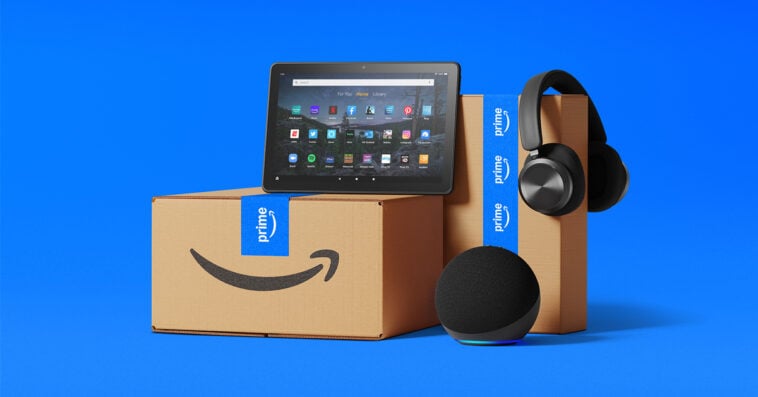After more than a year of anticipation, the courtroom doors have finally opened in the FTC’s case claiming that Amazon deceived millions of consumers into signing up for its Prime subscription service, which they never truly wanted.
FTC vs. Amazon: The Prime subscription lawsuit explained
The Federal Trade Commission (FTC) filed a lawsuit on June 21, 2023, alleging that the e-commerce giant used deceptive tactics to enroll customers in Prime and then made it exceedingly difficult for them to cancel. This legal action targets Amazon’s alleged use of “dark patterns”, a term for user interface designs that intentionally manipulate, coerce, or trick consumers.
The FTC’s allegations
The FTC’s complaint states that Amazon’s sign-up process for Prime was deceptively simple, often burying details about recurring charges in fine print. In contrast, the cancellation process was a deliberate “labyrinth.”
“Specifically, Amazon used manipulative, coercive, or deceptive user-interface designs known as ‘dark patterns’ to trick consumers into enrolling in automatically renewing Prime subscriptions,” the FTC complaint said.
According to the FTC, this complex cancellation process was internally known since at least 2016 as the “Iliad Flow”, a name that references Homer’s epic about the long, arduous Trojan War. The complaint details how customers had to “navigate a four-page, six-click, fifteen-option cancellation process” that included multiple “off-ramps” designed to distract or discourage them from finishing. These included warnings about losing benefits, promotional discounts, and special deals.
Amazon’s defense and recent changes
Amazon has staunchly defended its practices, with a spokesperson telling CNN, “The bottom line is that neither Amazon nor the individual defendants did anything wrong. We remain confident that the facts will show these executives acted properly and we always put customers first.”
Despite Amazon’s firm rejection of the allegations, the company, since the lawsuit was filed, has made some changes to its cancellation process. It now provides a dedicated cancellation page that clearly lays out options for members to end or pause their Prime membership, a notable shift from the previous “Iliad” process.
What to expect from the Prime trial
The highly anticipated trial is taking place in Seattle, at the U.S. District Court for the Western District of Washington, under the supervision of Judge John H. Chun. It is expected to stretch over the course of a month, beginning with jury selection on Monday. Once the panel is finalized, opening arguments are set to take place on Tuesday, setting the stage for what could be one of the most significant legal challenges Amazon has faced in recent years.
Over the coming weeks, jurors will hear testimony from FTC officials, expert witnesses, and Amazon’s legal team, who will present its defense to prove that the company’s practices are clear, ethical, and that the vast majority of its customers are satisfied with their Prime memberships.
The FTC has not asked for specific monetary damages in its complaint, but if the jury concludes that Amazon broke the law, the responsibility will then fall to Judge Chun to decide the scope of financial penalties. This could include not only compensatory damages but also possible restrictions or mandated reforms to Amazon’s subscription practices. Legal analysts caution that the outcome could have far-reaching implications, both for Amazon’s business model and for the way regulators approach consumer protection cases against other tech giants in the future.
How Prime grew into Amazon’s billion-dollar subscription empire
Amazon Prime, priced at $14.99 a month or $139 annually, has grown far beyond its origins as a simple fast-shipping perk. Launched in 2005 as a membership promising quick and affordable delivery, Prime has since transformed into one of Amazon’s most powerful business engines, generating billions of dollars in recurring revenue each year.
Today, Prime functions as an all-in-one subscription that touches nearly every corner of Amazon’s ecosystem. Members enjoy free two-day (and in some areas, same-day) delivery, access to Prime Video with a growing slate of original series and films, Prime Music, and benefits through Amazon Fresh and Whole Foods for grocery delivery. The membership also includes discounts on fuel through partner gas stations, food delivery perks, and exclusive access to Prime Day, Amazon’s annual shopping event featuring deep discounts available only to subscribers.
While Amazon does not publicly share its exact U.S. subscriber count, estimates highlight its massive reach. A March 2025 analysis from Consumer Intelligence Research Partners (CIRP) suggested that Prime had around 197 million members in the United States alone—making it one of the most widely adopted paid digital services in the country. Analysts note that Prime not only drives direct revenue but also locks customers more tightly into Amazon’s ecosystem, boosting spending across retail, digital content, and services. This near-ubiquitous presence of Prime in American households makes the FTC’s allegations of deceptive sign-up practices all the more significant.
Source: CNN

